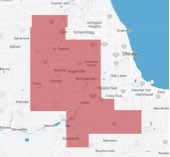Will A Vacant House Test Higher For Radon?
Each day we get at least one phone call with the same innocent question….”I’ve had my home vacant for ______ (fill in the blank) amount of time. Is that why my house has high radon levels?”
The natural thought with many homeowners is since we don’t live there any longer the home has been closed up. Let’s break this down a bit further so you will have a better understanding of indoor radon levels and what does and does not occur.
Rule #1: a home exchanges its own air every 6-8 hours. This happens through natural convection as well as circulating air with your HVAC system. Therefore, occupants of a home or in other words simply “living” in your home, will not affect radon gas levels.
Rule #2: When a radon test is going to be conducted, the testing company requires that you have “closed house conditions” for the 12 hours leading up to the test, as well as the 48 hours (or longer) that the testing is taking place. So that means no open windows for fresh air. Specifically, during this time you would be instructed to turn your air conditioner (or furnace) to the “auto” position. This requirement mirrors what they refer to as “normal living conditions.” A vacant house will have closed windows.
Rule #3: Just to be clear about the whole closed window vs open windows theory. Unless you are able to have every window open at all times when in a home, an open window(s) is essentially a large hole/opening. With increased air leaving, it creates a greater stack effect and can actually pull more radon gas into the home!! Especially in the case of upper level windows.
So rest easy! Whether you’ve been on vacation or simply have moved from your home, your “vacancy” will not be the reason your house does or does not have elevated radon levels.







